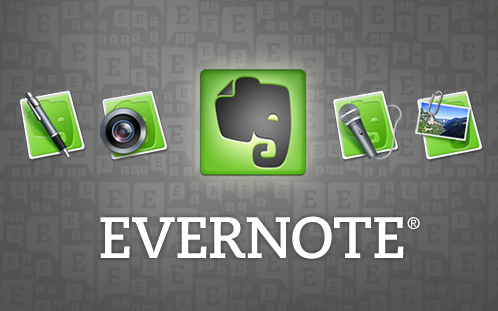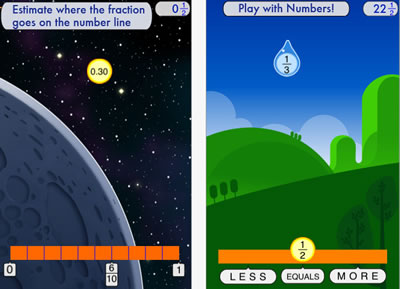This is pretty thought provoking - good stuff no matter what the current cicumstances.
If you can spare a few minutes.. Listen to the poem.. Digest the post. Click the link below.
"And since the whole thing's imagined anyhow, Imagine being Kevin. Which is he?" Part of the magic of imagination in the education of ourselves as young people lies in our seeing - and in our constantly changing understanding - of the older people around us. We see, we assume, we imagine, we project, we play at, we practice... and then we cycle through all of that again and again."
FOLLOW THIS LINK:
SpeEdChange: The Multiage Magic
Friday, May 25, 2012
Monday, May 21, 2012
TED-Ed Lessons Worth Sharing
Use engaging videos to create customized lessons. You can use, tweak, or completely redo any lesson featured on TED-Ed, or create lessons from scratch based on any video from YouTube.
Google Knowledge Graph: Things Not Strings
"The Knowledge Graph enables you to search for things, people or places that Google knows about—landmarks, celebrities, cities, sports teams, buildings, geographical features, movies, celestial objects, works of art and more—and instantly get information that’s relevant to your query. This is a critical first step towards building the next generation of search, which taps into the collective intelligence of the web and understands the world a bit more like people do."
Find the right thing
The words you search with can often have more than one meaning. With the Knowledge Graph we can understand the difference, and help you narrow your results to find just the answers you're looking for.
The words you search with can often have more than one meaning. With the Knowledge Graph we can understand the difference, and help you narrow your results to find just the answers you're looking for.
Get the best summary
See key facts about your search with the most useful and interesting information for that particular topic, based on the questions other people have asked.
See key facts about your search with the most useful and interesting information for that particular topic, based on the questions other people have asked.
Go deeper and broader
Make unexpected discoveries and explore a topic more deeply with a springboard of information at your fingertips. What you find may surprise you!"
Make unexpected discoveries and explore a topic more deeply with a springboard of information at your fingertips. What you find may surprise you!"
Labels:
Google,
searches,
searching,
searching web_searching
Thursday, May 17, 2012
Favorite Apps
Just a few of our favorite apps for the iPad
Pages lets you create beautiful letters, reports, flyers, and more on your iPad, iPhone, and iPod touch. No matter which device you’re on, iCloud keeps your Pages documents up to date across them all — automatically. And the Retina display makes everything you do in Pages look even more brilliant.
Flipboard creates a personalized magazine out of everything being shared with you. Flip through your Facebook newsfeed, tweets from your Twitter timeline, photos from Instagram friends, sounds from SoundCloud and much more.
Dropbox is a free service that lets you bring all your photos, docs, and videos anywhere. After you install Dropbox on your computer, any file you save to your Dropbox will automatically save to all your computers, your iPhone and iPad and even the Dropbox website! With the Dropbox app, you can take everything that matters to you on the go.
Evernote is an easy-to-use, free app that helps you remember everything across all of the devices you use. Stay organized, save your ideas and improve productivity. Evernote lets you take notes, capture photos, create to-do lists, record voice reminders--and makes these notes completely searchable, whether you are at home, at work, or on the go.
** The original, easiest-to-use, best-selling handwriting app for iPad. On sale. **
Penultimate gives you the fast, tactile gratification of writing on paper, with digital power and flexibility. Take notes, keep sketches, or share your next breakthrough idea -- in the office, on the go, or home on the sofa.
Penultimate gives you the fast, tactile gratification of writing on paper, with digital power and flexibility. Take notes, keep sketches, or share your next breakthrough idea -- in the office, on the go, or home on the sofa.
Star Walk is an award-winning Education app that allows users to easily locate and identify 20,000+ objects in the night sky. The 360-degree, touch control star map displays constellations, stars, planets, satellites, and galaxies currently overhead from anywhere on Earth.
Developed at the Stanford School of Education, Motion Math HD follows a star that has fallen from space, and must bound back up, up, up to its home in the stars. Moving fractions to their correct place on the number line is the only way to return. A recent controlled experiment showed that by playing Motion Math HD, learners improve their ability to estimate fractions and their attitudes toward math.
"History:Maps of World" is a fun and educational collection of high-resolution historical maps.
Check it out to keep up with your history, learn something about history.
Check it out to keep up with your history, learn something about history.
Explore art on your iPad.
Art repository Art.com presents a new iPad app, ArtCircles, which lets you explore curated collections of the world's greatest artworks. Curators include designer, Yves Behar; technology innovator, Michael Hawley; president of Rhode Island School of Design, John Maeda, among others.
Wednesday, May 16, 2012
Official Google Enterprise Blog: Find facts and do research inside Google Documents...
Official Google Enterprise Blog: Find facts and do research inside Google Documents...: Posted by Sarveshwar Duddu, Software Engineer Cross-posted on the Google Docs blog . Today we’re introducing the research pane —a new fea...
Monday, May 14, 2012
The Map of Life
The current release allows you to explore globally the geographic distributions for any terrestrial vertebrate species (as well as North American freshwater fish). Specifically you are able to:
- Display expert range maps, point occurrence records, records from study areas such as reserves and larger regions. These are shown as layers on maps, and a layer control widget allows you to adjust ordering, visibility, etc .
- Retrieve a list of species for the vicinity of any location worldwide using the species list tool. Simply set search radius and group of interest, and right click (control-click on Macs) your mouse button on a point of the map.
Map of Life will allow users to see several levels of detail for a given species–from the broad type of environment it lives in, to the finest–specific locations where the species’ presence has been documented. Users may now click on a point on the map and generate a list of vertebrate species in the surrounding area. The project gleans data from a variety of sources, including field guides, museum collections and wildlife checklists that involved scientists, conservation organizations and “citizen scientists. The current demo release allows users explore globally distributions for any vertebrate species and for North American freshwater fish. Much more to come!
A press release from a research team from the University of Colorado and Yale University quoted CU-Boulder Associate Professor Robert Guralnick of the Ecology and Evolutionary Biology Department, and research team member:.
We are taking 200 years of different types of knowledge coming from different sources, all documenting the locations of species around the world and compiling them in a way that will greatly enhance our knowledge of biodiversity. Such information could be used by any organization that needs to make informed decisions regarding land management, health, conservation and climate change.
Walter Jetz, Associate Professor of Ecology and Evolutionary Biology at Yale, and the project lead, shared:
It is the where and the when of a species. It puts at your fingertips the geographic diversity of life. Ultimately, the hope is for this literally to include hundreds of thousands of animal and plant species and show how much or indeed how little we know of their whereabouts.
The project will rely on citizen participation, and an upcoming mapping tool will offer the opportunity for amateurs to supply new or missing information regarding the distribution and abundance of a species. According to Guralnick,
A small but powerful next step is to provide a means for anyone, anywhere on the globe to use their mobile devices to instantly pull up animal and plant distributions and even get a realistic assessment on the odds of encountering a particular species of wildlife.
Thanks to Joyce Valenza for sharing this great resource.
Labels:
animals,
biodiversity,
climate change,
conservation,
geography,
map,
science,
species,
wildlife
Highly recommended Apps by 2nd Graders
This is a link to a great post by Mr. Schu. He surveyed his 2nd grade class and shares their top pics:

http://www.alsc.ala.org/blog/2012/05/mr-schus-2nd-graders-highly-recommend-these-apps/

http://www.alsc.ala.org/blog/2012/05/mr-schus-2nd-graders-highly-recommend-these-apps/
Tuesday, May 8, 2012
Subscribe to:
Posts (Atom)













